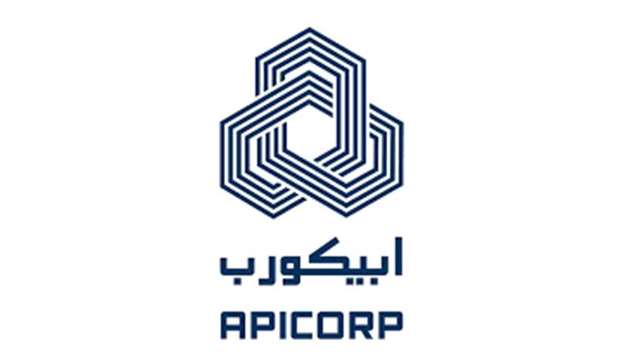The combination of low-cost gas resources and low-cost renewable energy makes the Middle East and North Africa (Mena) region a "strong" candidate to become a major exporter of blue and green hydrogen, according to the Arab Petroleum Investments Corporation (Apicorp).
At gas prices of $3-4/MMBTU, the levelised cost of blue hydrogen (LCOH) is estimated to be around 1.5/kgH in the Mena region based on SMR (Steam Methane Reformer) and CCUS (carbon capture utilisation and storage) technologies, the multilateral development financial institution said in its latest report.
The LCOH for green hydrogen is estimated to be $2.1/kgH to $3.6/kgH for the alkaline electrolysers and $2.3/kgH to $3.8/kgH for polymer electrolyte membrane electrolysers.
Energy experts believe that hydrogen is the next frontier as it can fill the same purpose as, for example, natural gas, and decarbonise many of the same sectors fuelled traditionally by hydrocarbons.
As costs of renewable energy sources and electrolysers decline, the competitiveness of green hydrogen is expected to improve.
With an increased focus on electrification of the economies through low- or zero-carbon sources, hydrogen is emerging as a promising energy carrier.
Whether used as a feedstock for industrial and chemical purposes, blended with natural gas for power generation, used in fuel cells as transportation fuel or used to store excess renewable energy, hydrogen’s spectrum of utilisation is extensive, it said.
The cost elements and the export potential will determine if it emerges as a strong export proposition from the Mena region, whether it be green hydrogen produced from renewable energy sources and/or blue hydrogen produced from hydrocarbons with CCUS technology.
As the cost profiles of renewable energy sources decline due to advancements in technologies mainly solar, wind and electrolysers, green hydrogen is expected to become more cost-competitive over time.
However, due to low natural gas prices in the Mena region, blue hydrogen will play a key role in the short to medium term.
“The Mena region holds vast potential as an exporter for net-zero products, especially given the shift towards electrification from sources such as hydrogen and ammonia. This ultimately should be the vision that policymakers strive to achieve,” said Dr Leila R Benali, chief economist at Apicorp.
Another key trend noted by the report is the expected uptick in planned investments directed to power transmission and distribution projects in several countries over the next five years, driven by the rise of renewables and focus on boosting regional interconnectivity.
In the Mena markets, the residential sector accounts for 41% of the total power demand, followed by industrial and commercial sectors at 21% and 20%, respectively, with the remaining 18% comprised other sectors such as agriculture and transport, as well as network losses.
The LCOH for green hydrogen is estimated to be $2.1/kgH to $3.6/kgH for the alkaline electrolysers and $2.3/kgH to $3.8/kgH for polymer electrolyte membrane electrolysers.
Energy experts believe that hydrogen is the next frontier as it can fill the same purpose as, for example, natural gas, and decarbonise many of the same sectors fuelled traditionally by hydrocarbons.
As costs of renewable energy sources and electrolysers decline, the competitiveness of green hydrogen is expected to improve.
With an increased focus on electrification of the economies through low- or zero-carbon sources, hydrogen is emerging as a promising energy carrier.
Whether used as a feedstock for industrial and chemical purposes, blended with natural gas for power generation, used in fuel cells as transportation fuel or used to store excess renewable energy, hydrogen’s spectrum of utilisation is extensive, it said.
The cost elements and the export potential will determine if it emerges as a strong export proposition from the Mena region, whether it be green hydrogen produced from renewable energy sources and/or blue hydrogen produced from hydrocarbons with CCUS technology.
As the cost profiles of renewable energy sources decline due to advancements in technologies mainly solar, wind and electrolysers, green hydrogen is expected to become more cost-competitive over time.
However, due to low natural gas prices in the Mena region, blue hydrogen will play a key role in the short to medium term.
“The Mena region holds vast potential as an exporter for net-zero products, especially given the shift towards electrification from sources such as hydrogen and ammonia. This ultimately should be the vision that policymakers strive to achieve,” said Dr Leila R Benali, chief economist at Apicorp.
Another key trend noted by the report is the expected uptick in planned investments directed to power transmission and distribution projects in several countries over the next five years, driven by the rise of renewables and focus on boosting regional interconnectivity.
In the Mena markets, the residential sector accounts for 41% of the total power demand, followed by industrial and commercial sectors at 21% and 20%, respectively, with the remaining 18% comprised other sectors such as agriculture and transport, as well as network losses.




